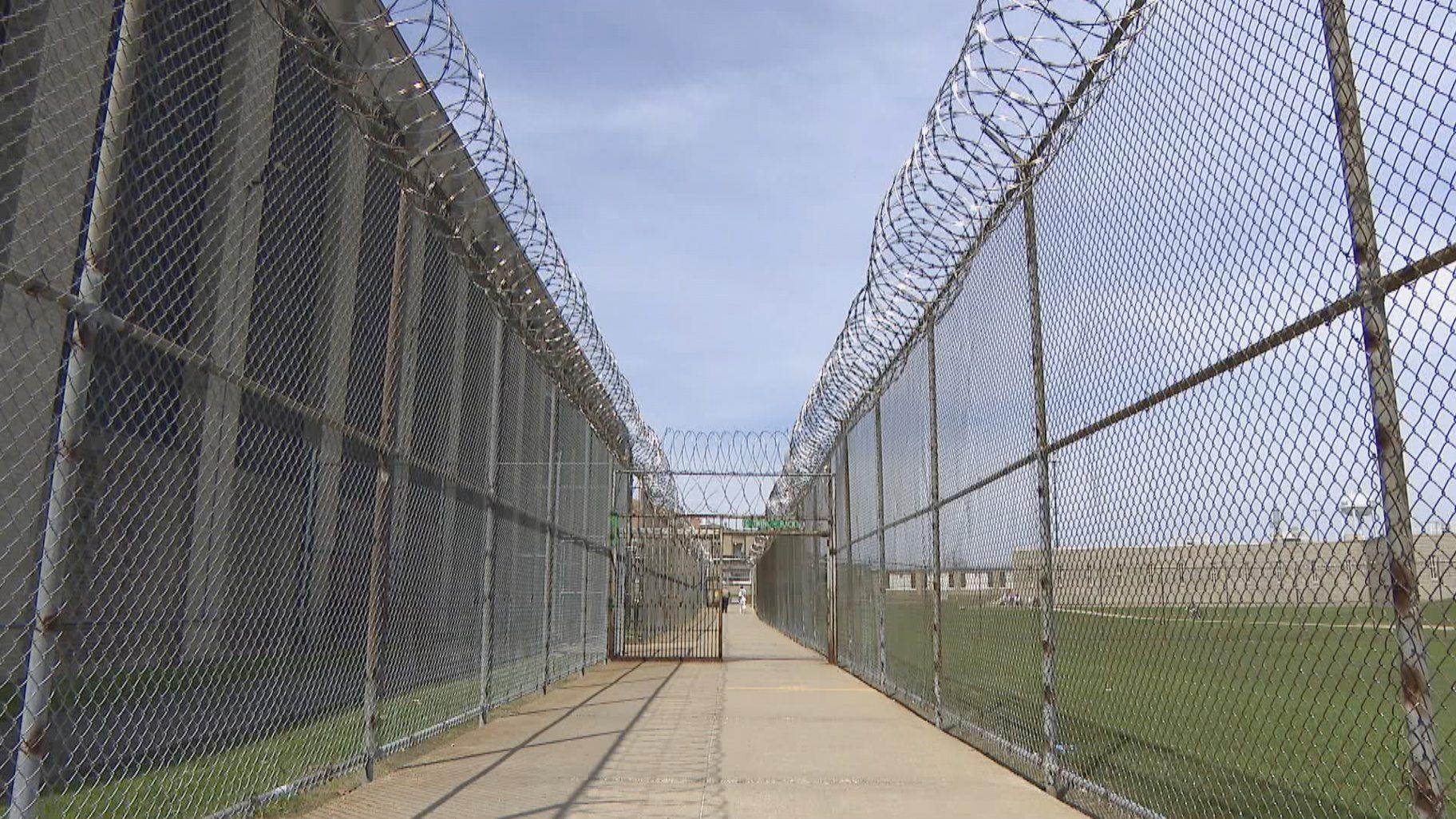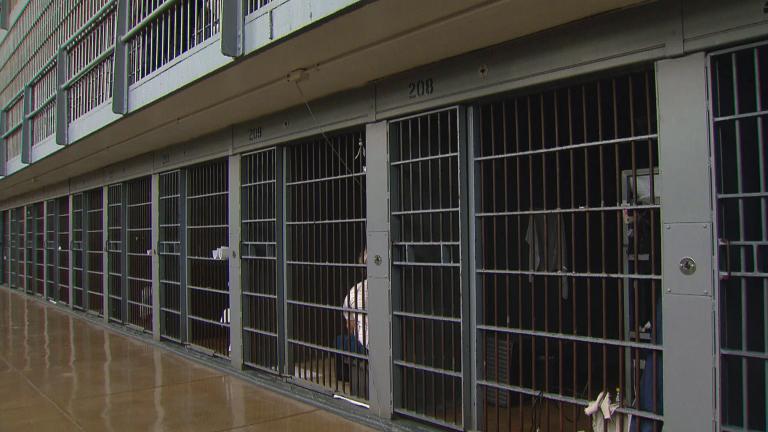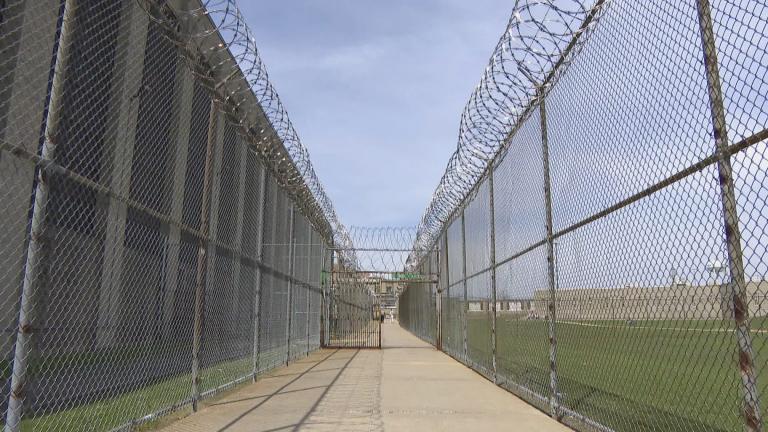 Stateville Correctional Center. (WTTW News)
Stateville Correctional Center. (WTTW News)
Advocates praising a fresh plan to demolish then rebuild a pair of aging Illinois prisons are nonetheless raising questions about its long-term sense.
In a plan unveiled Friday, Gov. J.B. Pritzker proposed spending $900 million over the next five years to knock down Stateville Correctional Center, a maximum-security men’s facility just outside of Joliet, and the women’s Logan Correctional Center in Lincoln, located 30 miles north of Springfield.
According to a news release, the Illinois Department of Corrections would temporarily close Stateville as a new prison is rebuilt on the grounds.
The plans for Logan are less firm.
“The status of Logan in the interim is still to be worked through with various stakeholders, and the location of the new facility is still being finalized,” the release reads.
Both Logan and Stateville were identified last year in an independent report by justice facility planning firm CGL as outdated and in need of costly repairs.
The report rated Stateville’s building conditions the worst of all state correctional facilities, with 11 of its buildings identified as having “complete degradation, inoperability, and need for replacement.” The review also calculated $286 million in deferred maintenance.
The report recommended replacing the housing at Stateville, saying its two housing structures “are not suitable for any 21st century correctional center.”
“As Stateville transitions to a multi-custody facility that prepares individuals for re-entry into society, these housing units stand in the way of being able to successfully make this change,” the report said. “New housing units should be built that provide dayroom space, ample cell size, and office space for counselors and support staff. In addition to the extremely poor conditions throughout the facility (peeling paint, leaking roofs) the facility’s 100 year old design is reflective of housing units. These units are poor for a maximum custody population, but even worse for a multi-custody re-entry mission.”
A 2013 class action lawsuit instigated by Lester Dobbey, then incarcerated at Stateville, sought relief from the alleged inhuman conditions there.
The case has been in a mediation posture since at least 2016, said the lead attorney on the lawsuit, Heather Lewis Donnell.
“We’re happy that the governor has taken this step,” Lewis Donnell said. “Obviously, we wish it had happened sooner, but we’re happy that people who have been residing at Stateville are not going to have to live in these inhumane conditions anymore. And the people who work there, too. It impacts people who live and work there.”
Lewis Donnell said it remains to be seen whether Pritzker’s proposal will put an end to the litigation, although “if Stateville gets rebuilt and the conditions are remedied, then the goals have been achieved.”
Logan has likewise been on activists’ blacklist.
CGL noted in its IDOC-commissioned facilities analysis that Logan first opened in the 1870s as the Illinois Asylum for Feeble-Minded Children.
“Our review found the existing Logan Correctional Center to be inefficient, ineffective, and unsuitable for any population,” said the CGL report, which recommended that IDOC find a more suitable housing location. “The aging coal-fired power system, molding housing units, and facility layout all work in opposition to the mission and goals of the facility.”
Meanwhile, the John Howard Association, an organization that monitors prison conditions and advocates for humane treatment of inmates, echoed those findings and said given the poor conditions it’s past time for Stateville and Logan’s demise.
“Acknowledging that both Logan and Stateville are not fit for human habitation represents an important step towards respecting the dignity and rights of people who are incarcerated, and there is benefit to rethinking our carceral environments in order to move towards smaller, more rehabilitative, modernized spaces,” the association said in a statement. “Illinois cannot continue to house and employ people in prisons that pose a danger to everyone inside of them due to degraded and hazardous conditions; the costs are too high when measured in dollars, morality, and our humanity.”
But the association questioned the necessity of rebuilding the facilities and called for their permanent closure.
“This announcement does not address the fact that the Illinois prisons are currently well under capacity, with close to 12,000 excess prison beds throughout the system; we can and should also permanently close some of our worst prisons. This makes good sense financially and morally,” the association said.
The possibility that the prisons won’t be rebuilt is largely why AFSCME, a politically powerful ally of Democrats that represents 90,000 active and retired public employees, has “grave concerns.”
“Closing facilities even temporarily would disrupt and potentially destabilize the prison system, while bringing upheaval to the lives of affected employees and individuals in custody,” AFSCME Council 31 director Roberta Lynch said in a statement.
While acknowledging the poor conditions of the two prisons, AFSCME said the organization is worried about staff who could be forced to move or lose their jobs, and questions where incarcerated individuals will be housed during the transition and whether transferring inmates to other facilities will lead to overcrowding or safety problems.
Although the prison population has been declining, AFSCME pointed out that that besides Logan, Illinois has only one other prison, in Decatur, dedicated to housing female inmates.
AFSCME also questioned the wisdom of the timeline of waiting to build new institutions until after Stateville and Logan are razed.
“Why not build new facilities elsewhere on the grounds while utilizing the existing facilities in the interim?” AFSCME said in a news release. “Could rebuilding on the exact location require remediating environmental hazards caused by demolition? The information released so far raises many more questions than it answers.”
The AFSCME union said its prison staff members were not consulted in the plan’s development.
Funding for the projects is part of Pritzker’s proposed capital infrastructure budget, which lawmakers are reviewing. They’re anticipated to finalize the budget in May.
Contact Amanda Vinicky: @AmandaVinicky | [email protected]







